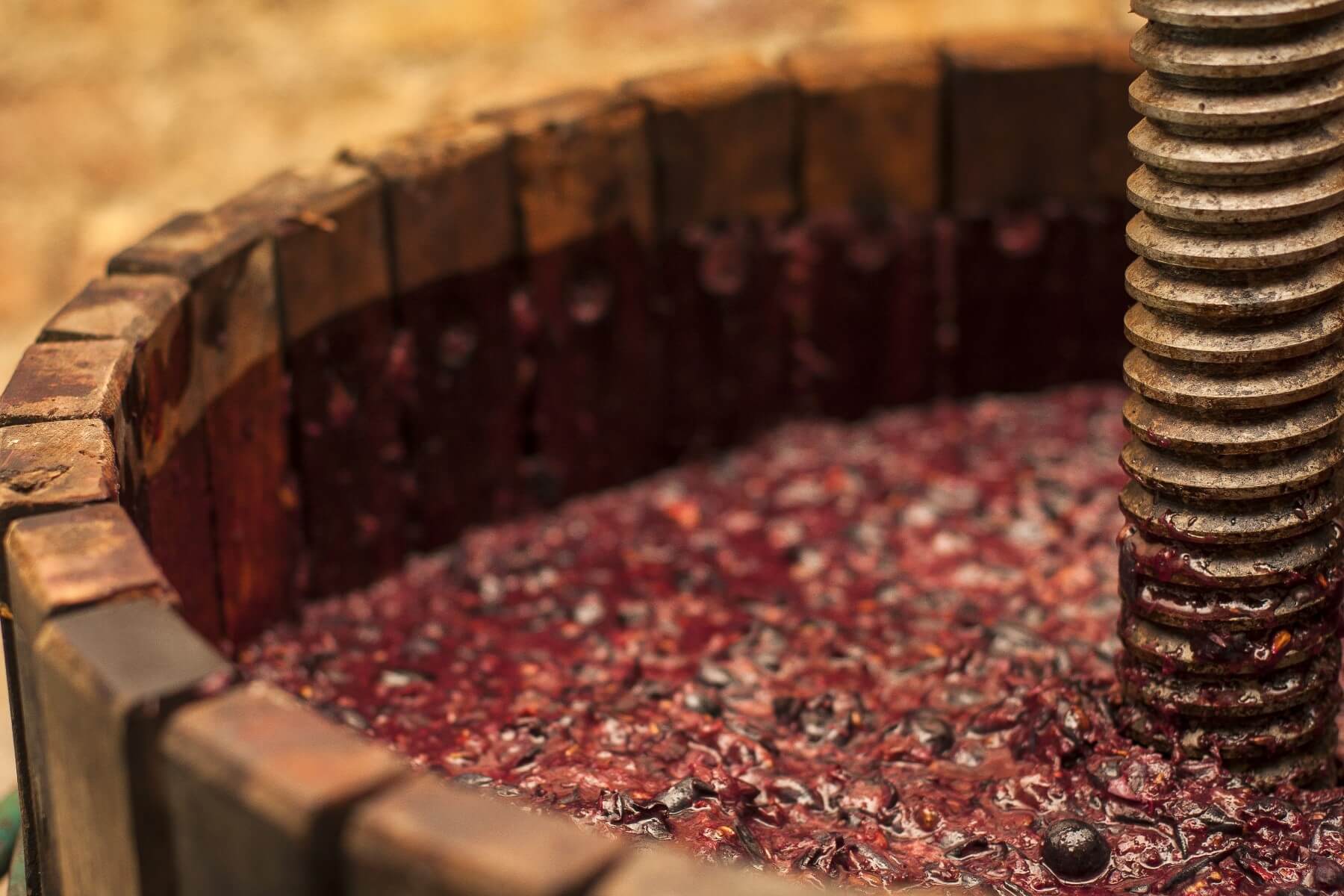

Do you ever wonder where wine comes from, the history behind the drink, or the centuries of reverence, respect and expertise that goes into its production?
If you’re like us, you probably spend a fair amount of time enjoying your favourite bottles. However, the chances are, most of the time you (like almost everyone else) take this wonderful drink a little for granted. Do you ever wonder where wine comes from, the history behind the drink, or the centuries of reverence, respect and expertise that goes into its production?
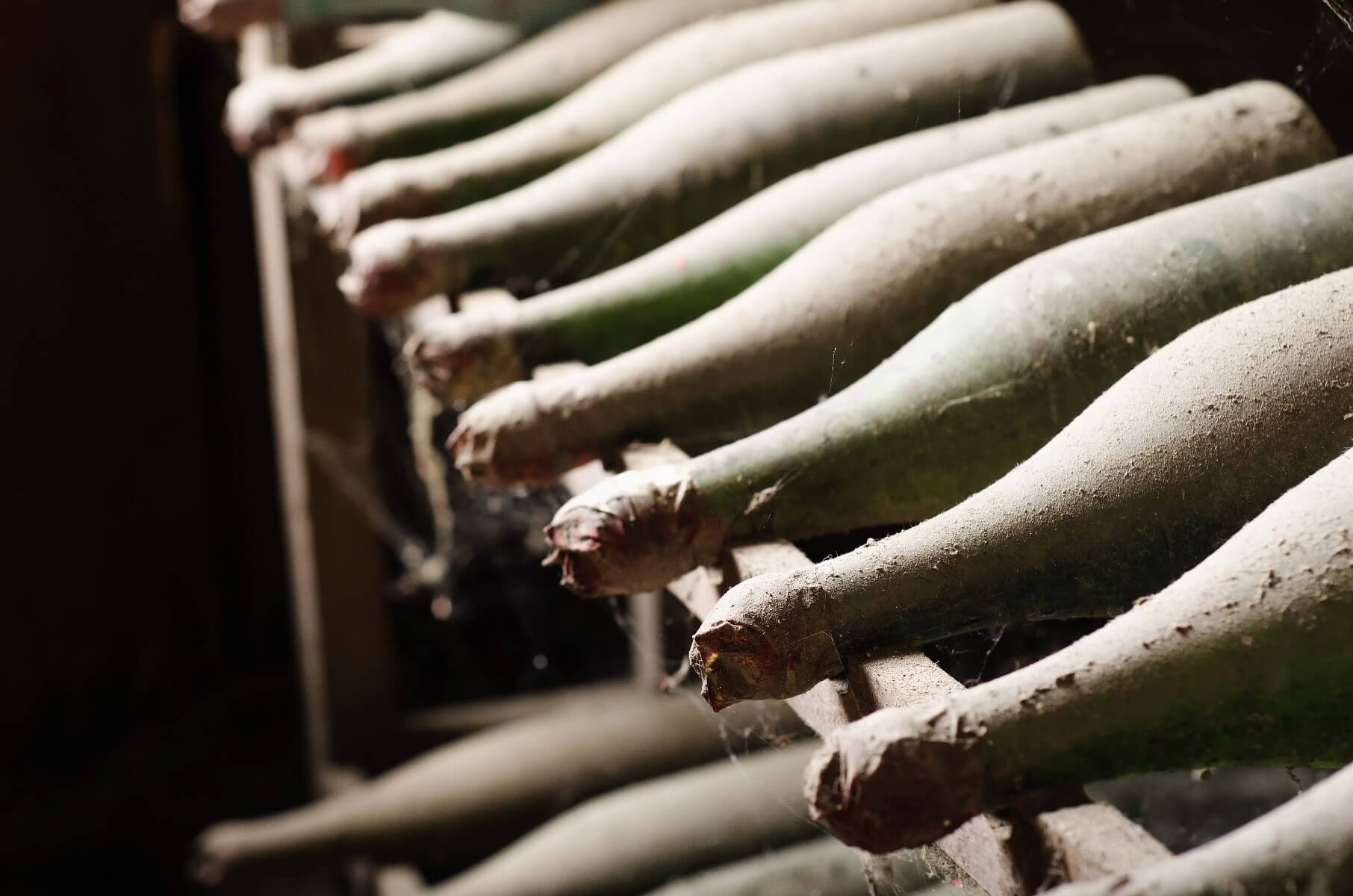
The history of wine stretches back a long way. Most archaeologists and historians agree that winemaking first arose in what is now Armenia, around 10,000 years ago. The oldest remains of wine casks and winemaking equipment are staggeringly old, dating back to around 6000 BC.
It’s safe to say that the drink we love and enjoy today is part of an unbroken chain of history, constantly adapted with each passing age, improved upon and altered to suit new styles and tastes.
Over the ages, some things have changed considerably in the way wines are made. Industrialisation has had a massive effect on the quantities wineries produce, and the standardisation of the product.
The process is certainly more sanitary than it probably was in the past (although interestingly, wine was preferred as a drink due to the fact it was considerably safer to consume than water), and the number of different varietals and styles has grown enormously due to modern farming methods.
However, much has stayed the same, and in fact, the past decade or so has seen a considerable resurgence in older, simpler and more traditional winemaking techniques. Winemaking is an art, for many, it’s a way of life, and something which is an indispensable part of certain cultures.
If you’ve ever wondered where your wine comes from, and how it ended up in your bottle and your glass, here’s a brief introduction to the key steps that lead to all wines, all over the world.

The grapes and the land
Of course, it all starts with the grapes. No matter the wine, the grapes must be perfectly ripe before wine production begins.
This happens at varying speeds and in varying ways, depending on the varietal and the location of the vineyard, and many of the best wineries in the world have been cultivating the same vines in the same location for hundreds of years.
Many winemakers also believe that the quality of the wine is not just dependent on the fruit itself, but the best produce should carry elements of the terroir it is grown on. This is essentially a fancy French word, referring to everything from the type of soil to the steepness of the slope the vineyard is positioned on, from the strength of the sunlight to the direction of the wind. There is some real truth in this.
Although the fruit itself is key, you can make bad wine from perfect grapes... but you can’t make good wine from bad grapes.
Picking the grapes
Once the grapes are fully ripened, it is time for them to be picked. Most big wineries now use a range of technical equipment to do this in order to save time, but more and more winemakers are focusing on small yielding, single-estate wines, and handpicking remains commonplace and respected.
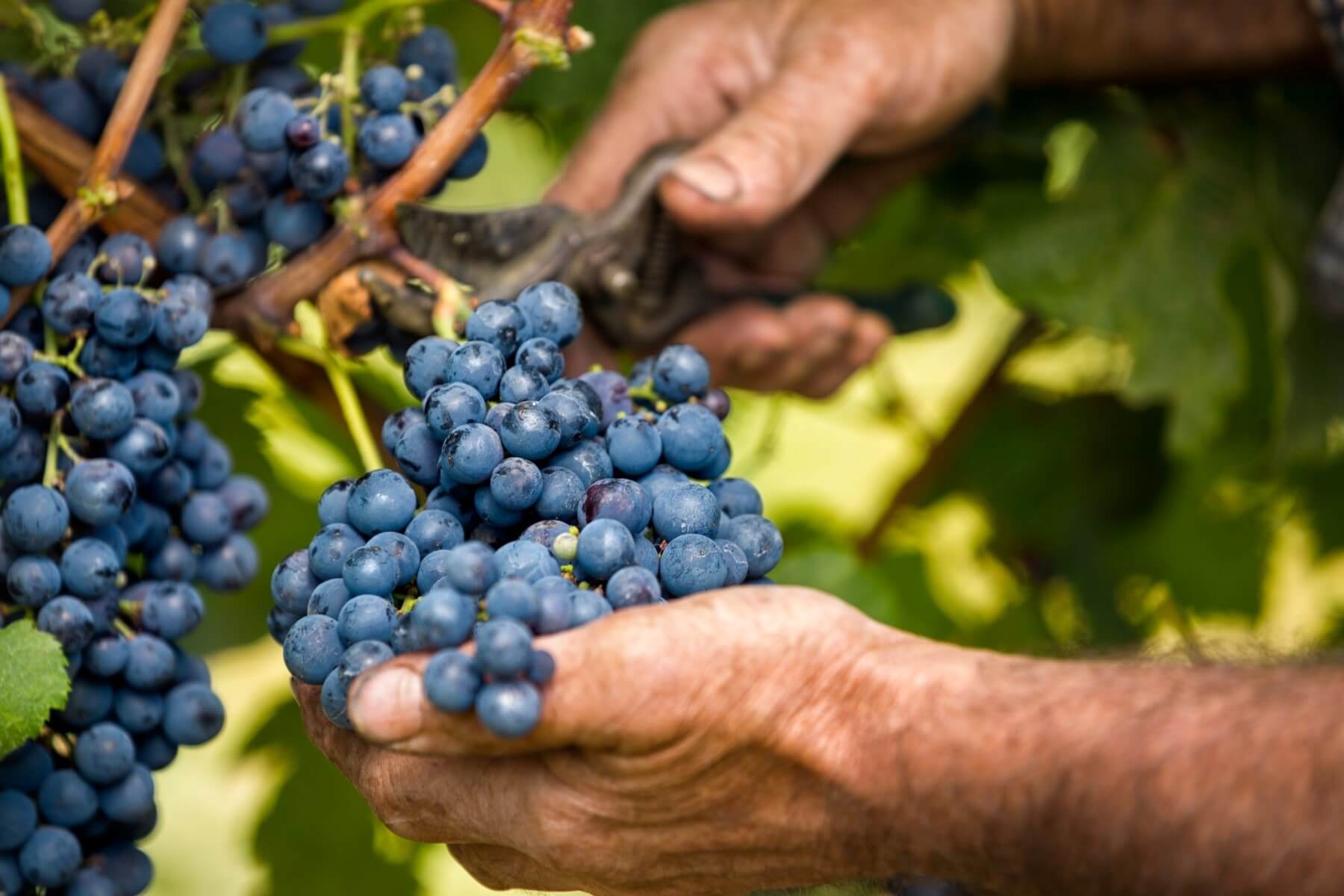
The grapes will then be sorted depending on quality. Most wineries will remove grapes which have withered on the vine (others make wine exclusively with rotten grapes), and the stalks will be removed and used for composting.
Crushing the grapes
At this point, the grapes will be ready for crushing. Many traditional wineries continue to do this process the old fashioned way - with the feet, in a large, shallow vat.
Indeed, in many countries, whole festivals are dedicated to the crushing of grapes by stomping, and it’s a way for entire communities to get involved in the winemaking process.
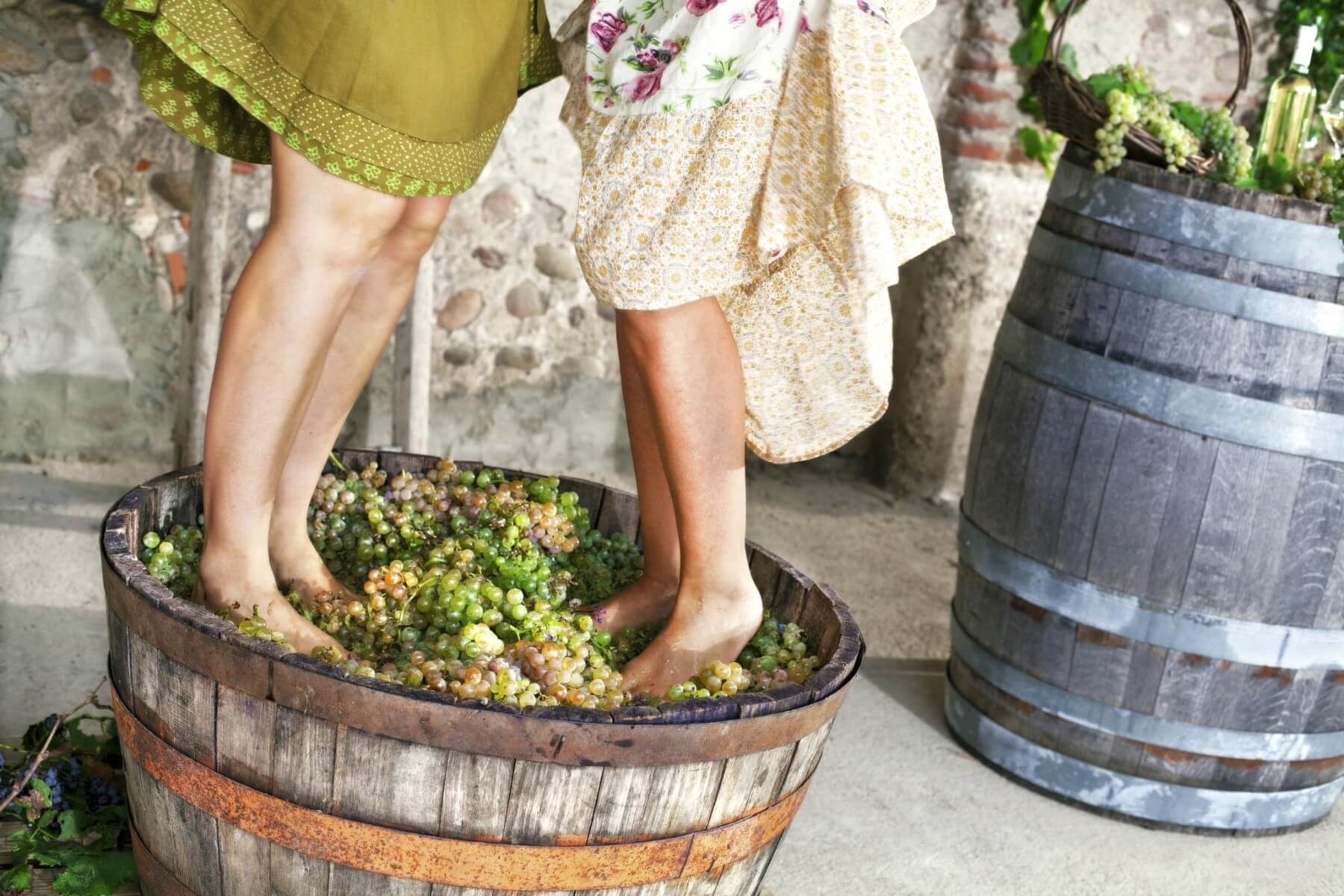
It is at this stage where we start to see a radical difference in the way white and red wines are produced.
Red wines get their colour and much of their tannin and body from the skins of the grapes. As such, if you want to make red wine, you need to keep the skins with the grape juice and flesh, in order for these qualities to be present in the finished product.
How long you allow the juice to remain in contact with the skin (as well as the seeds, which also contain much of the character) is up to the individual winemaker and their desired result.
White wine, on the other hand, is pressed - that is, the grapes are squeezed through a large sieve, in order to remove the skins and seeds completely.
Interestingly, some white wines are made from black grapes (Blanc des Noirs Champagne, for example), and these have had no contact with the pigments in the skin, thus producing a clear, ‘white’ wine from dark-skinned varietals such as Pinot Noir.
Fermenting the grapes
Fermentation is a natural process, that occurs in all soft fruits after they have fallen and started decomposing (there are several youtube videos of ‘drunk’ animals, intoxicated on fermented fruit in the wild. Check them out!), and it is essentially a chemical process wherein sugars slowly turn into alcohol.
There are many, many different types of fermentation, each imparting its own character to the wine, but we’ll keep things simple for now.
Both white and red wines require yeast in order to kick start and control the fermentation process. Some wineries use specially cultivated yeasts in order to do this, but many contemporary wineries are turning to natural, wild yeasts already present in the air and on their vines, in order to keep things as natural as possible.
White wines are relatively simple to ferment, but red wines require a lot of constant attention in order to maintain their character and flavour. One of the things which happen during fermentation is that carbon dioxide gas is created, and this causes the mixture of grape skins and juice to separate in the vat, and the skins mass together and rise to the surface.
As such, the winemaker must - often several times per day - push the skins back down, to ensure they stay in contact with the juice, and release their colour, tannins and flavour.
Ageing the wine
The process by which wine is aged is, again, highly variable from winery to winery. Some countries, regions and sub-regions have strict laws and regulations dictated how long their wines must be aged for before being released, other places leave it up to the individual vintner.
Essentially, ageing wine allows extra character and flavour to develop in the barrel, ranging from spicy notes, to earthy, woody touches, or vanilla, tobacco and leather tastes.
It also allows the harsh tannins present in many red wines to break down and soften, producing much more subtlety and complexity, and a ‘roundness’ to the wine which is much sought after.
Many wines are barely aged at all - a lot of white wines, for example, are best drunk young and fresh, and full of the original fruit flavours intended by the winemaker. If the wine is to be aged, though, there are literally dozens of ways it is done.
Oak barrels, second/third/fourth-hand barrels, stainless steel vats, charred and burnt barrels, barrels previously used for the production of other drinks… the list goes on and on, and each is said to have its own special characteristic, whether the wine is to be aged for a couple of months or six years.
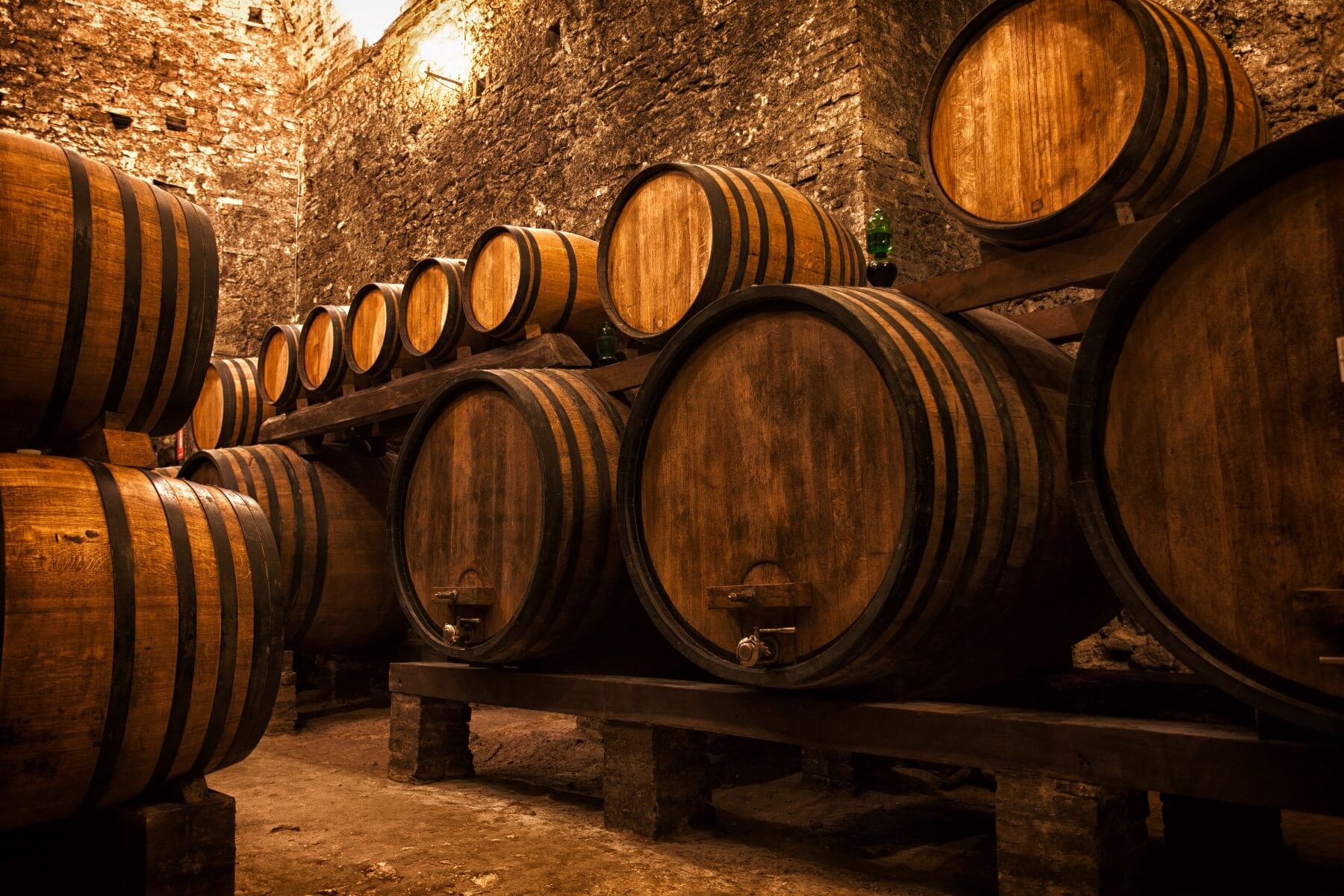
Bottling the wine
Once the winemaker has decided - after several tests, tastes and second opinions - that the wine has reached its optimum expression in the barrel, it is time for it to be bottled.
There is a fascinating history of wine bottling, and you’ve probably noticed that bottles vary from country to country, region to region (think of the sturdy, proud Bordeaux bottles, for example, compared with the tall, thin, elegant bottles from Alsace) but we’ll have to save that for another article and another day.
Many wines are further aged in the bottle, and can be ‘cellared’ or kept in atmospherically appropriate rooms for decades before being opened to reveal their even softer, rounder, complex character. For most of us, though, bottles are for opening and enjoying, rather than keeping in a dark room beneath the house.
But next time you crack open a bottle and pour yourself a glass of wine, take a moment to think about this fascinating process, full of love and history, that brought you the drink you hold in your hand.
There sure is a perfect bottle out there for every palate. Do you know your wine personality? If your answer is no, then our quiz below will tell you which wines to pick up next!
Next up: Take our Wine Palate Quiz and match your personal tastes to your top three wine types
Do you know your wine personality? If your answer is no, take our quiz to find out which wines to pick up next and build your box!
Build my box





